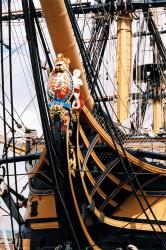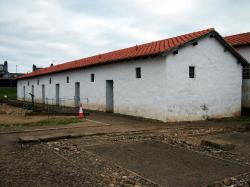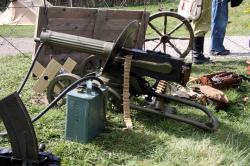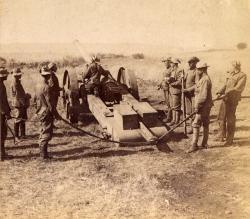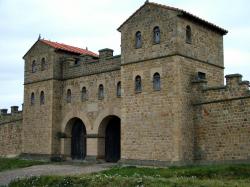Translate this Page
Malta 1800
Battle Name : Malta 1800
Date(s) : 03 June 1798 - 05 September 1800
Part of : The French Revolutionary and Napoleonic Wars , French War of the Second Coalition ,
Outcome : A victory for Maltese, Portuguese,British,Neapolitan over French Garrison
Type of battle : Sea, Seige
Summary
The Maltese rose against the French who retreated in the fortified citis around the harbour of Valletta and the three cities.
The British blockaded the harbour on request of help from the Maltese whilst the Maltese forces besieged the French. Some Portuguese,British and Neapolitan troops were landed to assist the Maltese.
This long blockade brought considerable suffering to the island. The French concentrated in Valetta and by the end of the siege were dying at the rate of 100 per day through sickness. The French survivors were transported to France in British ships. The British occupied the island.
Location
An island in the Mediterranean Sea about 70 miles due south of Sicily. (Malta)
More details
On 2nd September 1798, the French Authorities in Malta started to auction property confiscated from the Church. It was the final of a series of actions meant to finance the French campaign in Egypt at the expense of the Maltese. Heavy taxation, forced enrolment with the French Army and Navy which led the Maltese to organise their own independent government and army and rise against the French garrison on the island which was some 6,000 strong.
The Maltese captured the fortified city of Medina, the old capital, killing the French garrison there. French reinforcements were sent from the capital, bastioned town of Valletta, and the Maltese ambushed the column and attacked the French posts and coastal towers and batteries procuring themselves arms and cannons to besiege the French garrison which had by now retreated within the safety of the Towns of Valletta, Vittoriosa Cospicua and Sengles - all bastioned towns around the harbour.
By October the Maltese dug trenches and set up gun batteries to besiege the French, and asked the assistance of the King of 2 Sicilies for help. King Ferdinand depended on the British for his own defence and Nelson asked the Portuguese fleet -under Admiral De Niza, to land engineers to better site the guns and help the Maltese with some marines. British men of war were dispatched to blockade the French within the harbour lest assistance should be sent to the besieged garrison.
The situation had the Maltese repulsing repeated French attempts at breaking the siege.
The Maltese organised a number of attempts to get into the city and attacks with the help of some British marines, which failed.
An attempt by the French navy to land 2,000 troops to lift off the siege was foiled by the presence of Nelson and his fleet resulting in the capture of the French ships.
After 18 months, British and Neapolitan Infantry were landed the first Maltese regiment to serve in the British army formed.
in September 1800 the French garrison surrendered to the Allies - but the capitulation was signed by the French to the British - leaving the Maltese out of the capitulation treaty!
The Maltese requested that their sovreignity be protected by the British, and islands be governed by a Maltese constitutional Presidency.
The French, British, Russians and European nations at the Treaty of Amiens agreed otherwise and that the islands be given back to the Order of St.John as guarantee of neutrality.
The British procrastinated the evacuation of the island, being part of the cause for the regain of hostilities with Napoleoic France. In 1814, Britain declared Malta a British Colony, until independence in 1964.
[Details supplied by John Neville Ebejer]
Casualty figures
French Garrison
- Number engaged :
- 6,000
- Casualties :
- 2,000 (33.33%)
Maltese, Portuguese,British,Neapolitan
- Number engaged :
- n/a
- Casualties :
- n/a

